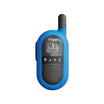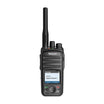In the world of two-way radio communication, clear and intelligible audio is paramount, especially in high-noise environments such as construction sites, manufacturing plants, or public safety operations. One critical feature that helps maintain the clarity and quality of radio transmissions is the compandor.
What is a Compandor?
A compandor is a device or feature integrated into two-way radios that significantly improves the signal-to-noise ratio (SNR) of radio communications. The term "compandor" combines the words "compressor" and "expander," which are the two main components involved in its operation. This feature works by compressing the audio signal's dynamic range at the transmitter and then expanding it back at the receiver end.
How Does a Compandor Work?
The compandor operates in two phases: compression and expansion. During the compression phase, loud sounds are slightly reduced, and soft sounds are increased in volume before the audio signal is transmitted. This process reduces the dynamic range of the audio signal, making it less susceptible to noise interference during transmission.
Once the signal reaches the receiver, the expansion phase reverses the compression, restoring the original dynamic range of the audio. This ensures that the received audio maintains clarity and quality, significantly reducing background noise and enhancing the intelligibility of speech.
Benefits of Using Compandors in Two-Way Radios
-
Improved Audio Quality: By improving the SNR, compandors ensure that voice transmissions are clearer and more discernible, even in noisy environments.
-
Reduced Background Noise: Compandors help to minimize the impact of ambient noise, making it easier for users to understand each other without constantly asking for repeats.
-
Enhanced Communication Range: Since the signal is less affected by noise, compandors can indirectly extend the effective range of radio communication under certain conditions.
-
Increased Efficiency: Clearer communication means less time spent on misunderstandings and repeated transmissions, leading to more efficient operations, especially in critical scenarios.
Compandors in Practical Use
In practice, compandors are particularly valuable in scenarios where two-way radio users are surrounded by significant background noise, such as at airports, large events, or in emergency situations. Public safety officials, event coordinators, and industrial workers benefit greatly from the enhanced audio quality provided by compandors, ensuring that vital messages are conveyed and received with minimal distortion.
Conclusion
The integration of compandors in two-way radios represents a significant advancement in ensuring high-quality, reliable communication. By effectively managing the dynamic range of audio signals, compandors mitigate the adverse effects of background noise, making two-way radio communication more effective and efficient. For professionals relying on two-way radios for critical communications, the compandor is an indispensable feature that maintains the clarity and integrity of their conversations.












































